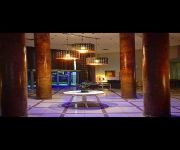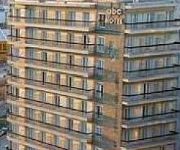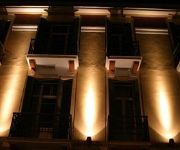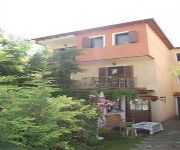Facts and Data
Webpages:
Official Unesco Page
Hellenic Ministry of Culture
Basis Data:
Unesco World heritage since: 1988
Size of heritage: 5.33 ha
Coordinates:
Longitude: 22,965°
Latitude: 40,638°
Summary
Founded in 315 B.C., the provincial capital and sea port of Thessalonika was one of the first bases for the spread of Christianity. Among its Christian monuments are fine churches, some built on the Greek cross plan and others on the three-nave basilica plan. Constructed over a long period, from the 4th to the 15th century, they constitute a diachronic typological series, which had considerable influence in the Byzantine world. The mosaics of the rotunda, St Demetrius and St David are among the great masterpieces of early Christian art.
Location on Map
Show bigger map on Openstreetmap
Paleochristian and Byzantine Monuments of Thessalonika
The Paleochristian and Byzantine Monuments of Thessalonika, located in the Prefecture of Thessaloniki, in the Region of Central Macedonia, Greece, is a UNESCO World Heritage site that showcases the rich history and architectural heritage of the city. This site comprises several significant religious structures that date back to the early Christian and Byzantine periods.
History
Thessalonika, formerly known as Thessalonica, was an important city during the Byzantine Empire and played a crucial role in the spread of Christianity. The city was founded in 315 BC by King Cassander of Macedon and quickly became a major center of trade and culture in the region. It was also an important hub for the early Christian community.
The Paleochristian and Byzantine Monuments of Thessalonika include several churches and religious structures that were built between the 4th and 14th centuries. These monuments reflect the architectural styles and artistic influences of the time, showcasing the transition from early Christian basilicas to Byzantine domed churches.
Current State
Today, the Paleochristian and Byzantine Monuments of Thessalonika are well-preserved and provide visitors with a glimpse into the city's rich past. One of the most notable structures is the Rotunda, originally built as a mausoleum for the Roman Emperor Galerius in the 4th century. It later served as a church and then a mosque before being converted into a museum. The Rotunda features impressive mosaics and a massive dome, making it a must-visit attraction.
Another significant monument is the Church of Agios Dimitrios, dedicated to the patron saint of Thessaloniki. This church was built in the 5th century on the site where Saint Dimitrios, a Christian martyr, was believed to have been buried. The church underwent several renovations over the centuries and showcases a mix of architectural styles, including Roman, Byzantine, and Ottoman influences.
The Church of Agia Sophia, not to be confused with its namesake in Istanbul, is another remarkable structure within the site. Built in the 8th century, it is one of the oldest surviving churches in Thessaloniki. The church features stunning mosaics and intricate frescoes that depict biblical scenes and saints.
Other notable monuments within the site include the Church of Panagia Acheiropoietos, the Church of Osios David, and the Church of Panagia Chalkeon. Each of these structures showcases unique architectural features and artistic elements that reflect the religious and cultural significance of Thessaloniki during the Byzantine period.
The Paleochristian and Byzantine Monuments of Thessalonika are not only important historical and cultural landmarks but also serve as active places of worship. Visitors can explore these magnificent structures, admire their intricate details, and gain a deeper understanding of the city's religious and architectural heritage.
Hotels and places to stay
Daios Luxury Living
Egnatia Palace
Sun Beach Hotel
Athina Airport Hotel
ABC
Helianthus Guesthouse
Olympia Boutique Hotel
Park Hotel
Orestias Kastorias
Studios Arabas - Hostel
Videos from the area
Videos provided by Youtube are under the copyright of their owners.




















